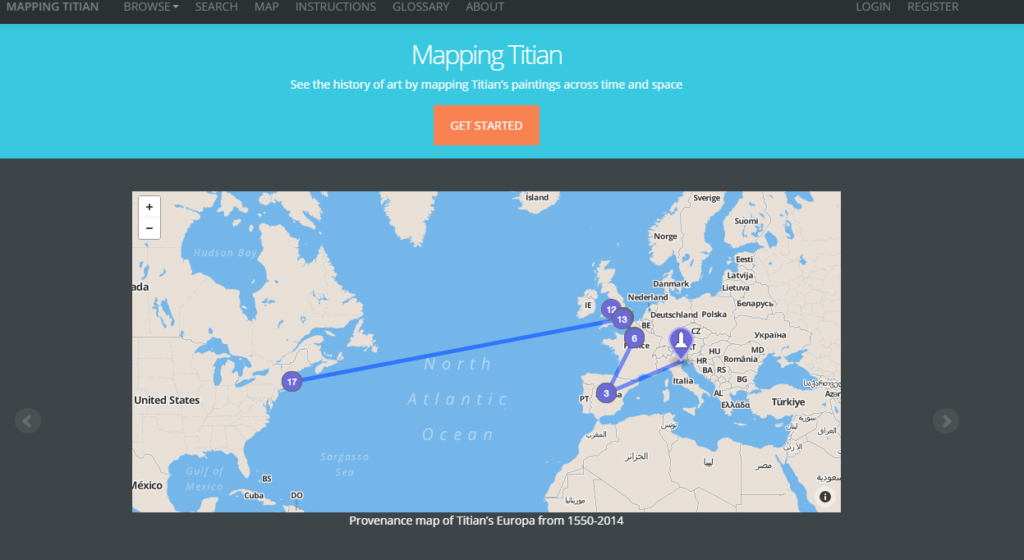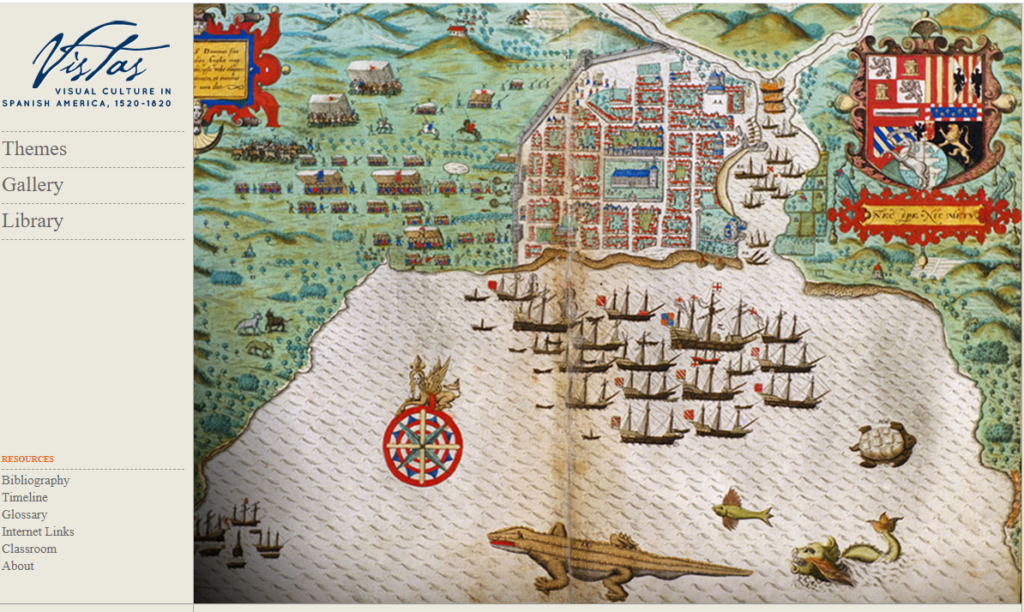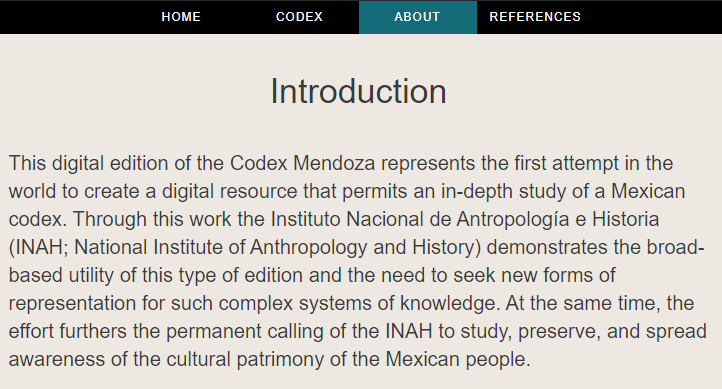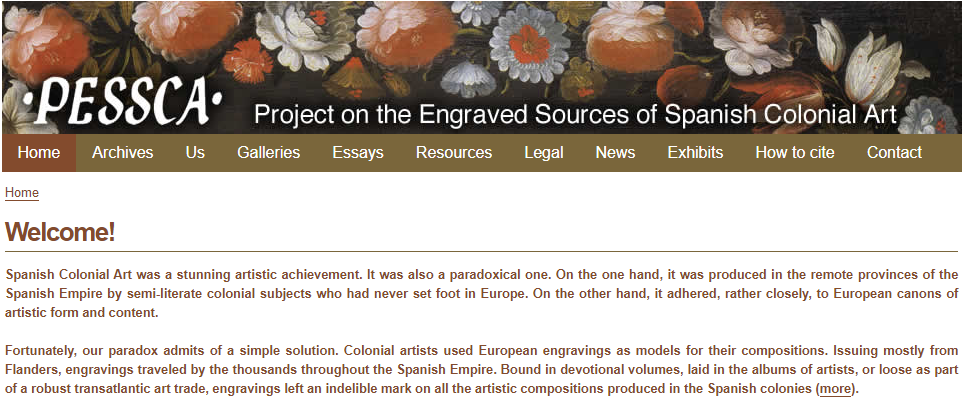http://www.getty.edu/research/tools/index.html
Includes access to the digital collections, Getty Research Portal, tools, and databases.
http://www.getty.edu/research/tools/index.html
Includes access to the digital collections, Getty Research Portal, tools, and databases.
https://arcade.nyarc.org/search~S7
Detailed historical documentation for works of art, including basic information about the artist, title, medium, dimensions, date, and owner of the work, former attributions, provenance, variant titles, records of exhibition and condition history, and biographical information about portrait subjects from the Frick Art Reference Library and its partners in the New York Art Resources Consortium (NYARC) accessible in the Photoarchive’s research database records via NYARC’s online catalogue Arcade.

Mapping Titian allows users to visualize one of the most fundamental concerns of the discipline of Art History: the interrelationship between an artwork and its changing historical context. Focusing on the paintings executed by the Venetian Renaissance artist, Titian (ca. 1488-1576), this site offers a searchable provenance index of his attributed pictures and allows users to create customizable collections of paintings and customizable maps that show the movement of the pictures over time and space with the application of various filters.

The e-leo experiment stems from the very particular nature of the Biblioteca Leonardina collection, which possesses the entire published corpus of Leonardo da Vinci’s works, starting with the first edition of the Treatise on Painting of 1651, and ranging from the oldest editions to the most recent facsimile publications, including those of the national edition of Leonardo’s manuscripts and drawings. The archive contains almost the entire corpus of Leonardo’s work, relying on its collection of editions (from the first, dated 1651), and has set itself an even more ambitious goal, that of contextualizing them within the broader framework of Italian and European historical and scientific heritage. The data in the archive are texts and drawings, analysed and classified by means of indexing methods for drawing searches, semantic glossaries, and search filter tools: an apparatus proposing an integrated processing model for Renaissance manuscripts by artist-engineers. In parallel, a scientific programme is being developed for the study of Leonardo’s specialized “languages” (mechanics, optics, anatomy, architecture, etc.), with the aim of giving access to the various 15th and 16th century manuscript production in the Vulgar Italian. A programme of translations into English of Leonardo’s corpus has also been started. Furthermore, e-Leo is currently experiencing a further, twofold stage of development: on the one hand, we are processing manuscripts contemporary with Leonardo (such as the Zibaldone by Bonaccorso Ghiberti), and on the other hand, his literary sources (not yet published).
E-leo meets the issue of the accessibility of the Leonardian corpus, published in a number of facsimile editions between the nineteenth and the twentieth century (mainly the first half): 1. a corpus comprising a massive number of sheets; 2. Fragmented in terms of collocation; 3. extremely complex by virtue of its intrinsic features (the relationship between text and image, which distinguishes it graphically; the fragmentariness of the drawings and projects, which are rarely finished; and the difficulty of reading the texts because they are themselves fragmentary, besides being in mirror writing). At this time it is the most complete digital edition of Leonardo’s corpus. It builds on that bulk of publications of manuscripts and drawings mentioned above, providing a powerful tool for accessing it and a resource for the study and analysis of Leonardo da Vinci’s works (but also for a broader and more generalized treatment, with similar criteria, of technical-scientific texts from the late medieval and Renaissance periods). It is indeed intended to provide further points of access to the content: the index of drawings, which tries to account for and include what gets left out in a textual search; and the glossary, which attempts to describe and historicize Leonardo’s language.

A website of love emblems, a very popular genre based on word and image combinations for the youth in the Low Countries ca. 1600. It currently includes 27 Dutch love emblem books, religious as well as profane. For all of these we have full transcriptions, page facsimiles and indexes, as well as extended search options. Links to sources and parallels, translations and annotation are being added.

The Drawings of the Florentine Painters, a robust digital resource based on Berenson’s publication of the same name, allows users to search for nearly 4000 drawings by artist, title (i.e. subject, in English or Italian), location, and technique. Each entry includes key information from all three editions of Berenson’s text (1903, 1938 in English; 1961, in Italian), as well as the current location, an image of the catalog page, and plates included in 1903; most entries also have links to museum webpages, including images.

Closer to Van Eyck reconstructs the world of Hubert and Jan van Eyck, and to that of the art restorers who have painstakingly revealed the earlier glory of these paintings, which had been hidden for many centuries. Includes an index of images and videos of the restoration and photographic reconstruction d serves as a gateway for viewing the many high-resolution images of the Ghent Altarpiece. This web application provides information on the current restoration of the Ghent Altarpiece, and it allows you to study the polyptych.

Vistas brings the visual culture of Spanish America online, offering a unique collection of paintings, sculptures, architectural monuments and objects from daily life. Resources include a gallery, bibliography, timeline, and glossary. Teaching materials are also provided.

The Codex Mendoza was created under the orders of Viceroy Antonio de Mendoza to evoke an economic, political, and social panorama of the recently conquered lands. It was made in 1542 and since 1659 it has been in the collection of the Bodleian Library. This digital edition of the Codex Mendoza represents the first attempt to create a digital resource that permits in-depth study of a Mexican codex.
Project on the Engraved Sources of Spanish Colonial Art (PESSCA)

The goal of the Project on the Engraved Sources of Spanish Colonial Art (PESSCA) is to document the effect of European prints on Spanish Colonial Art. To reach its goal, PESSCA has been pairing colonial works of art with their engraved prototypes and posting them online. As of now, PESSCA has gathered more than 5000 such pairings.